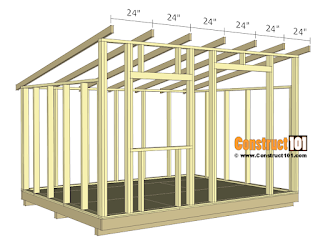Building Your Dream 10x12 Storage Shed: A Complete Material Guide
Embark on a rewarding DIY project and construct a sturdy, practical 10x12 storage shed! This guide provides a comprehensive breakdown of the materials you'll need, ensuring a smooth and successful build. We'll cover everything from the foundation to the final roofing shingles, empowering you to tackle this project with confidence.
Foundation: Setting a Solid Base
A strong foundation is paramount for a long-lasting shed. Choose a foundation type suitable for your soil conditions and local climate. For this 10x12 shed, we'll focus on a concrete slab, offering superior durability and stability. This requires careful planning and execution.
Materials for the Concrete Slab:
- Gravel: Approximately 1 cubic yard for proper drainage and base compaction.
- Concrete Mix: Calculate the required amount based on the slab dimensions (approximately 4-6 inches thick) using an online concrete calculator. Consider using a pre-mixed bag for ease of use.
- Rebar (optional but recommended): Use 1/2-inch diameter rebar, creating a grid pattern spaced 12-18 inches apart for added reinforcement. Calculate the necessary length based on the shed dimensions.
- Form Boards: Use pressure-treated lumber to create forms around the perimeter of the slab. The height of your forms will determine the thickness of your slab.
- Concrete Sealer: Apply after the concrete cures to prevent cracking and water damage.
Framing: The Shed's Sturdy Skeleton
The framing provides the structural integrity of your shed. Use pressure-treated lumber for the foundation sill and floor joists to resist rot and insect damage. Opt for high-quality dimensional lumber for the wall studs and roof rafters, ensuring strength and stability. Precise measurements are critical here!
Framing Materials:
- Pressure-Treated Lumber (4x6): For the foundation sill, providing a strong base against the concrete slab.
- Pressure-Treated Lumber (2x6): For floor joists, ensuring a level and strong floor.
- Dimensional Lumber (2x4): For wall studs (spaced 16 inches on center), providing structural support for the walls.
- Dimensional Lumber (2x6 or 2x8): For roof rafters, creating the roof structure. The size depends on your roof pitch and local snow load.
- Plywood (3/4 inch): For the sheathing, covering the exterior walls and roof.
- Metal Connectors: These are essential for properly connecting framing members and improving overall structural strength.
Exterior Cladding & Roofing: Protecting Your Investment
Choose exterior materials that not only look great but also provide weather protection. For siding, consider durable options like vinyl, metal, or wood. Select roofing material appropriate for your climate and budget – asphalt shingles are a popular and cost-effective choice.
Exterior and Roofing Materials:
- Siding: Vinyl siding, metal siding, or treated wood planks – choose based on your preference and budget. Calculate the square footage of your walls to determine the required quantity.
- Roofing Shingles: Asphalt shingles are a common and relatively inexpensive option. Determine the square footage of your roof to calculate the required number of bundles.
- Underlayment: Provides an extra layer of protection against water damage under the shingles.
- Flashing: Essential for preventing water leakage around chimneys, vents, and other roof penetrations.
- Drip Edge: Installed along the edges of the roof to prevent water damage.
Doors & Windows: Adding Functionality and Light
Consider the size and placement of your shed's door and windows carefully, balancing practicality with aesthetics. A sturdy door is vital for security, and windows offer natural light and ventilation. Ensure you choose appropriately sized and durable units.
Door & Window Materials:
- Exterior Door: Choose a solid-core door for enhanced security and weather resistance.
- Windows: Select windows appropriate for the size of your openings, considering weather-resistance and energy efficiency.
- Hardware: Purchase hinges, handles, and locks for the door and any necessary window latches.
Remember to always consult local building codes and obtain necessary permits before starting your project. With careful planning and attention to detail, building your 10x12 storage shed can be a rewarding experience, providing a valuable addition to your property for years to come.









No comments:
Post a Comment